Getting out of Fes in the hire car is pretty hairy as no one appears to have a lane, but once we’re away from the Medina and heading out of town, the road empties considerably.
The landscape is really spectacular as we near the lower Atlas Mountains. It is dry and rocky with the odd fertile valley in between.
The drive takes the best part of a day and we arrive in our hotel in the middle of nowhere, just before sunset.
It’s always interesting when you book things on line, a long time in advance as they are always a bit of a surprise when you arrive
I remember thinking that the pool was a great idea but on arrival, it is windy and cold and there is no way that anyone feels like swimming.
We meet some great French people who come over to Morocco in their camper, most years. The majority of them speak only French and drink lots of wine, but there is an English woman among their party, who translates for us during our meal. Now whenever anyone thinks what we’re doing is cool, we can give them one of our thousand business cards that we had made up in Fes.
We leave fairly early the next morning to drive to Merzouga where we are meeting Mustapha from Merzouga Camel Trek, in the centre of town.
Our decision to spend a night in the desert was a last minute one as our last camel excursion was not the most comfortable for Roger. He assures me that he will find an alternative seating position that spares the pressure on his important bits.
The road to Merzouga, where I have travelled once before, is amazing. The whole landscape is furled and wrinkled with amazing jutting rocks in rows for miles across.
Every so often there is a fossil shop or sign spelt out in rocks on a crumbling hillside that leads off to a dinky looking hut. We will have to explore these later as we have an appointment with Mustapha the camel man.
We cruise into Merzouga, where there are groups pf people waiting on the side of the road to entice uncertain looking tourists into hotels of trekking offices. We try to look as if we know where we’re going, despite the fact that we have been instructed to meet in a café that is not on the map.
Mustapha must see us coming. After all, we’re the only family for miles around and our car is so loaded up with carpets and ceramics that none of us can see out of the window properly.
After a delicious late lunch of Tagine and salad, we follow Mustapha to “the hotel” which is not quite a hotel yet.
One day be an awesome place to stay, but for now it is an unfinished building project. We reluctantly leave our car with all of our worldly possessions, parked outside and take the few things we need to stay in the desert overnight. The camels arrive (one for each of us) and we set off into the dunes.
We are officially on the edge of the Sahara. Merzouga is a popular spot because it borders a big expanse of sand dunes which appear to stretch off into the rest of Africa. They do in fact, end after a couple of kilometers and the desert becomes dusty and rocky, but the experience of being in the dunes is amazing.
We move as a caravan of camels tied end to end. We are matched in size to our camels. Mine is the biggest and rides in the front. There are pluses and minuses. I get to experience the clean expanse of sand as our camels get further and further out, but I can’t see behind me to the rest of the family.
I can hear Roger though. He is struggling to sit on his camel comfortably (as am I but luckily I don’t have testicles. Whilst Omar who I leading the camels, chooses our route very carefully so that we stay on fairly flat terrain, often travelling along the very tops of the dunes, there are occasional downhill bits where it feels as though the camel’s knees will give way and we will all fly over the top of the handles.
By sunset, the wind is getting up and we are glad of our desert wear. As well as seeming like a tourist novelty, I remember that my scarf wrapped around my head and across my face, was very useful last time I was in Merzouga.
We arrive at the camp just on dark. It is actually very well established and even has some western style toilets. There are candles in the tents and dinner is cooking somewhere nearby. It is too windy to sit outside and we are in danger of falling asleep is we lay down on our stretcher beds.
Dinner by candlelight in the big tent is delicious. A group of older Moroccan woman and their two sons, turn up shrieking with laughter on their camels, and we try to have a conversation over dinner with our limited Arabic and French.

Around the fire after dinner, Mustapha and Omar play the drums and sing traditional Moroccan chants. We all learn a few drum patterns although the Moroccan triplet timing is quite erratic. Mustapha takes a carpet to the top of the dunes where the wind has died down and the stars have come out. He tells us the names of the constellations in Arabic and we see Matariki in the sky.
It is a special experience that makes me think wistfully about our last trip to Takaparawhau at Bastion Point to take part in the welcoming of the dawn for Matariki.
For the ten years that our children were involved in Te Whānau Whāriki (the Maori unit at our local school in Ponsonby) we journeyed many times to many mountain tops around Auckland to see the rising of the Pleiades constellation which in Aotearoa is known as Matariki and heralds the beginning of a new year for Maori. It is usually around the time of the winter solstice so our predawn trips are often very cold, wet and cloudy and I have not once, until our very last year in the Kura, seen the seven twinkling starts of Matariki in the sky.
I remember last year, as we stood looking eagerly at the sky, that the clouds cleared for just a moment and we spotted Matariki. At that moment, it struck me that we were leaving our little life in Grey Lynn and stepping into something much bigger. The moment is not lost on me, here at the top of a sand dune in the Sahara with a Bedouin camel herder pointing at the stars.
Any prerequisites that we had about clean linen and un-sandy beds are forgotten as we settle down under the well used blankets, side by side on our camp stretchers. It is so quiet in the desert, aside from the snoring of the camels. This is a special experience.



We wake early the next morning to see the sunrise and set off through the dunes before it gets too hot.
We are stiff and sore from the day before and there are bones hurting in my bottom that I didn’t know were there. Roger has to hop off and walk but finds that despite the camel’s lolloping slow gait, they actually move quite fast.
Mustapha runs all over the dunes like a professional photographer, taking pictures of us from many different angles. Of all of our photos, these are probably my favourite as we are all together in our camel caravan on the edge of the Sahara.
We get back to Mustapha’s house just in the knick of time. Any further and I would have had to hop off and walk too. We have tea with Mustapha at his home where the kids all fall asleep.
We are staying another two nights in Merzouga but as it is only 10am, we have a bit of time before we check in at the hotel. It is already very hot and we are all tired from an accumulative lack of sleep.
When we finally get to our room at Kasbah le Touareg, we all slump onto the beds and fall asleep. Stella sleeps all afternoon but the incessant pressure from the boys in a confined space eventually drives us outside to the pool.
This place is like an oasis in the desert! From time to time we arrive somewhere where it truly feels as if we are having a holiday.
The next day I plot a course that takes us to the end of the road.
When I visited Merzouga in 1996, it was just a few guest houses that accommodated back packers and the local Bedouin population lived predominantly, a nomadic lifestyle. Now Merzouga is full of Germans and Dutch in motorcycle gear and four wheel drive rally racers, as the dunes are obviously a bit of a motor heads playground.
The sight of Bedouin tents in the distance is unusual now and when we drive into the last town before the road finishes, all the kids run out shouting “Caramello”.
We decide to head back into the interior to do some fossil perusing. On the way out of Merzouga, a couple of kids had rushed to the side of the road holding two white desert foxes above their heads. We have been having debate in the car about whether stopping to talk to the kids, will encourage them in their wild animal exploitation. I am unhappy about the way they are holding the foxes by their necks but Stella thinks that we will end up giving the some money and taking photos and will reinforce their dodgy business practices.
We have an interesting conversation about how when you’re a kid from Grey Lynn, maybe your first business enterprise is selling lemonade and cookies on the footpath, whereas here, it is probably finding something interesting to entice tourists in for a photo.
I explain that one of the dangers of leading a privileged lifestyle is that it is easy to become judgemental abut the ways that people with less opportunity , go about their lives.
We decide to stop, hang out with the kids, give them some money and talk to them about handling the foxes. As soon as we arrive, a couple of guys ride out on bicycles and set up a little display of crystals, fossils and necklaces. They speak reasonable English which makes it easier for us to deliver our imperialistic message on animal care.
We tell them that what most tourists really want to see, is animals in their natural habitat (although many, including us, are sucker for a cute fox photo) And if they are hand raising them because they’re orphaned (or more likely smuggled away from their mothers), they are kind and careful. i.e. don’t hold them by their necks.
We say our goodbyes and drive away and watch in the rear vision mirror as another car passes and they run out with foxes dangling…..
During lunch at Dakar café, our favourite (and seemingly safe) source of food, we run into Mohammed, our would be companion from Chefchaouan. I remember him saying he was from Merzouga but it is all a little awkward, especially as we spent our last two days in Chefchaouin, avoiding him. Perhaps because of our rudeness, or perhaps because he realises that we’re not going to go on a tour with him, he concentrates his energies on some other tourists.
We head back towards Erfoud to find some fossil sellers.
Someone has gone to a lot of trouble to entice people off the main road, up a driveway into the mountain, by creating an enormous sign on the side of a mountain and making a series of little rock piles all the way up the drive.
We pull up next to what must be the workshop as there are piles and piles of fossils on tables, waiting to be uncovered.
The shop owner, his children and his goats all come out to witness our arrival. He takes us for a walk along the ridge of his land, where there are hundreds of Orthosceras and Amonites buried in the rocks. During the Palaeozoic era – about 540 million to 250 million years ago – the southeast of Morocco lay under the sea.
We do a little bit of digging and find all kinds of inserting things in the rocks. Apparently there is a large dinosaur dig nearby too, but it is too hot for serious archaeology.

Back at Kasbah le Touareg, we walk into the sandhills behind the hotel and do some sand hill sliding on pieces of cardboard and watch the sunset.
The next day we are heading to the gorge of the Dadès River which lies between the Atlas Mountains and the Jbel Saghro of the Anti-Atlas mountain range.
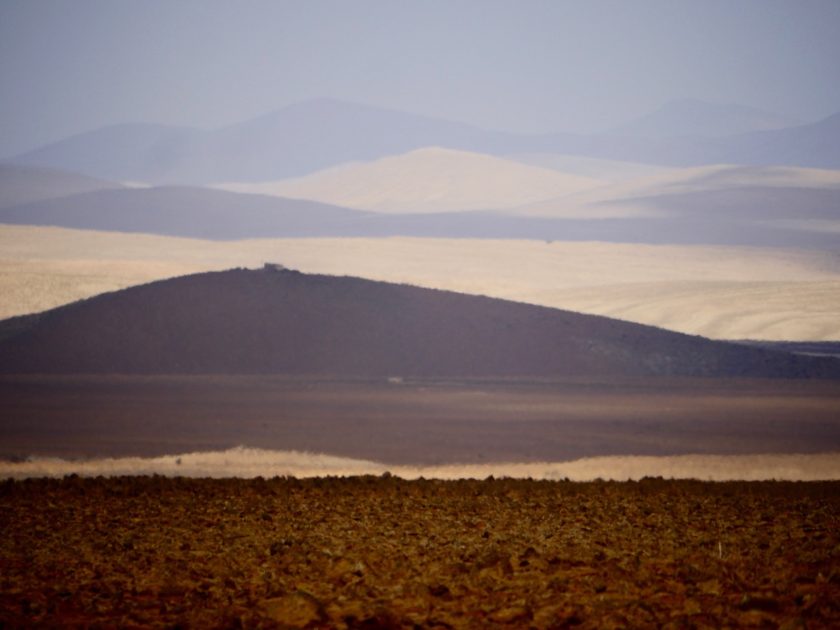






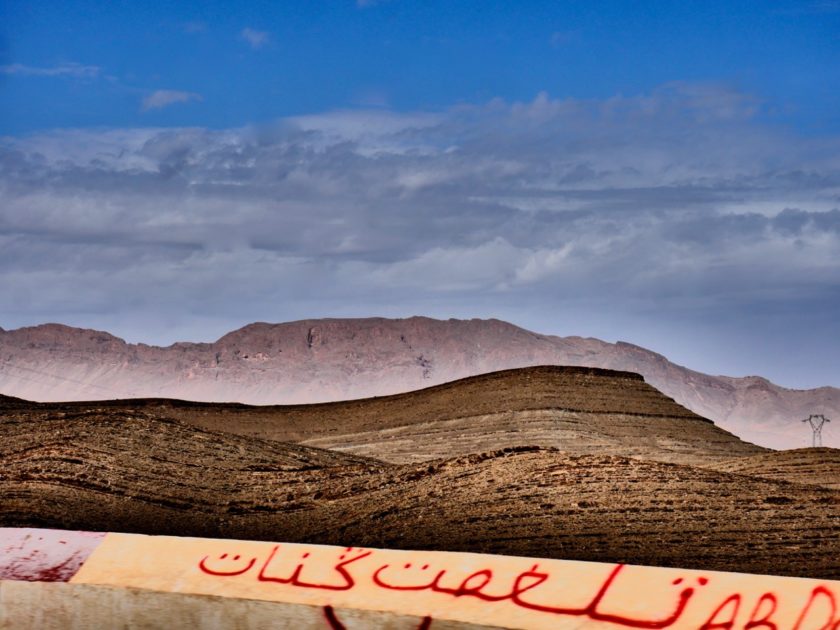
















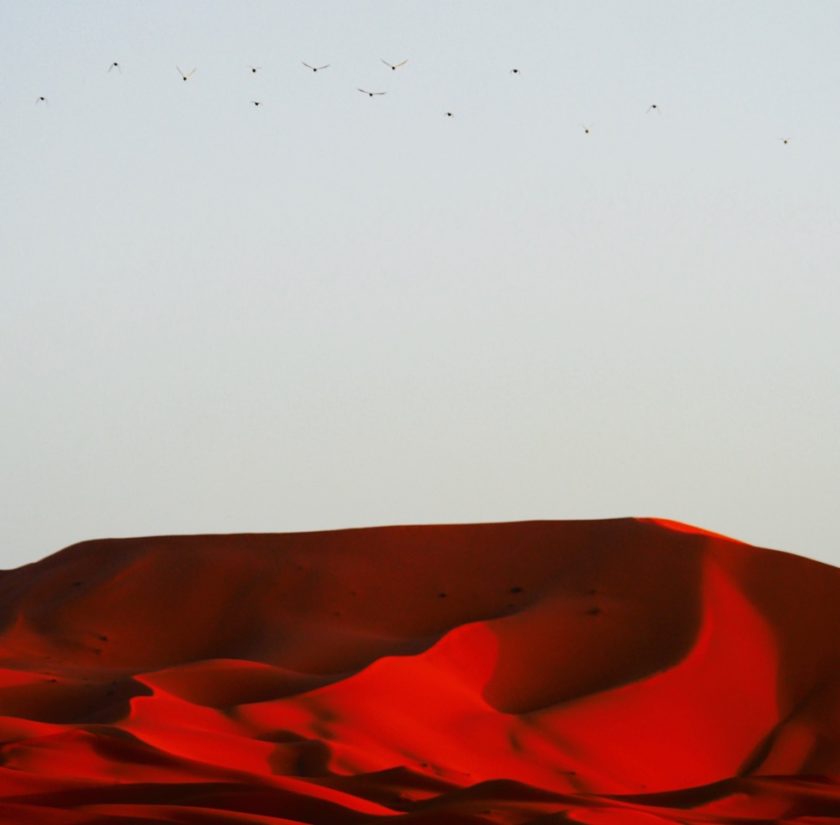
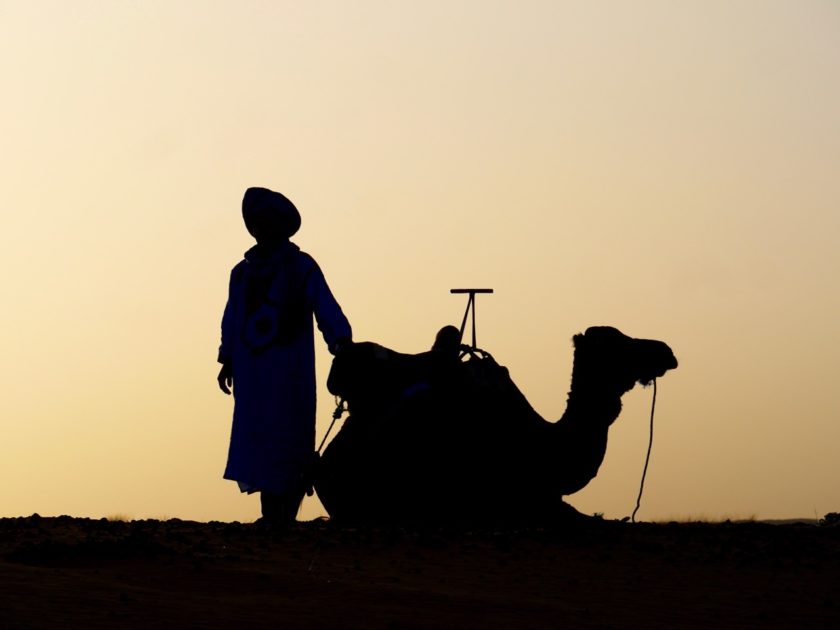




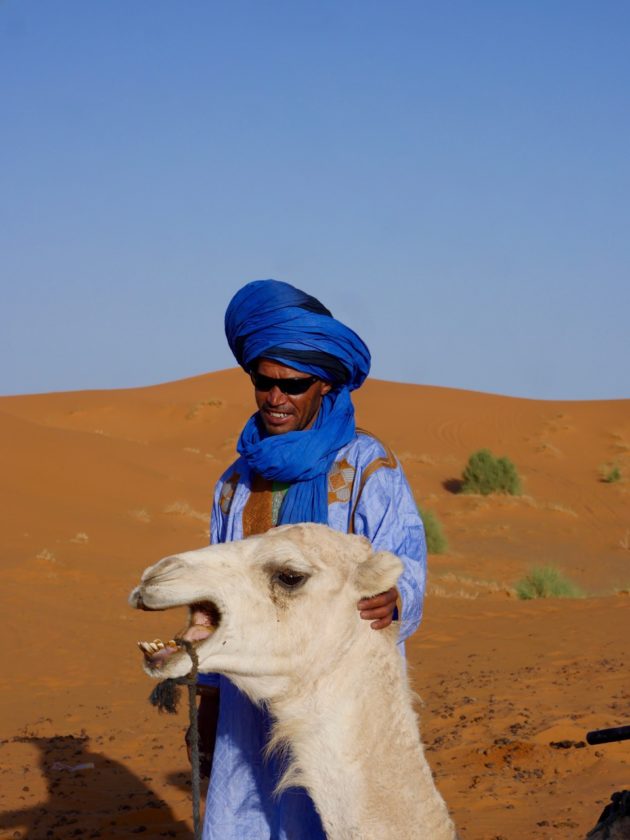









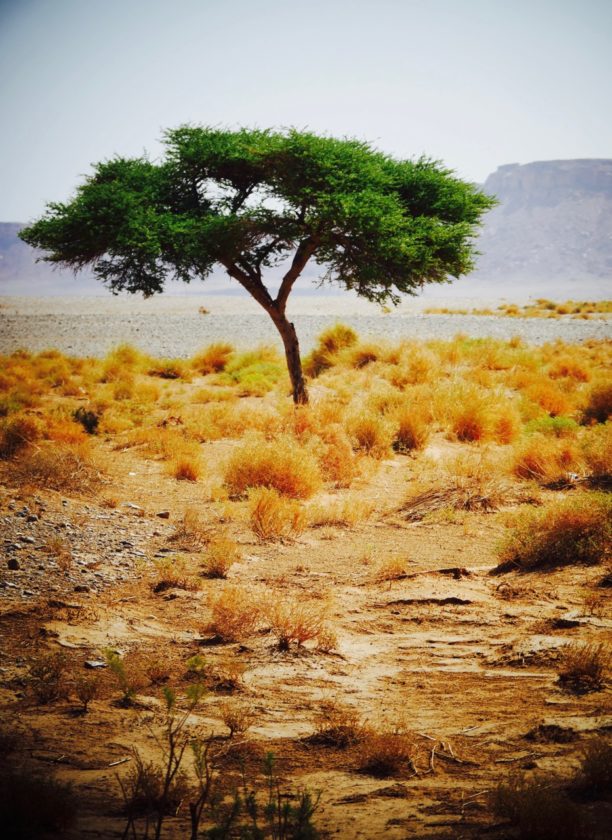




















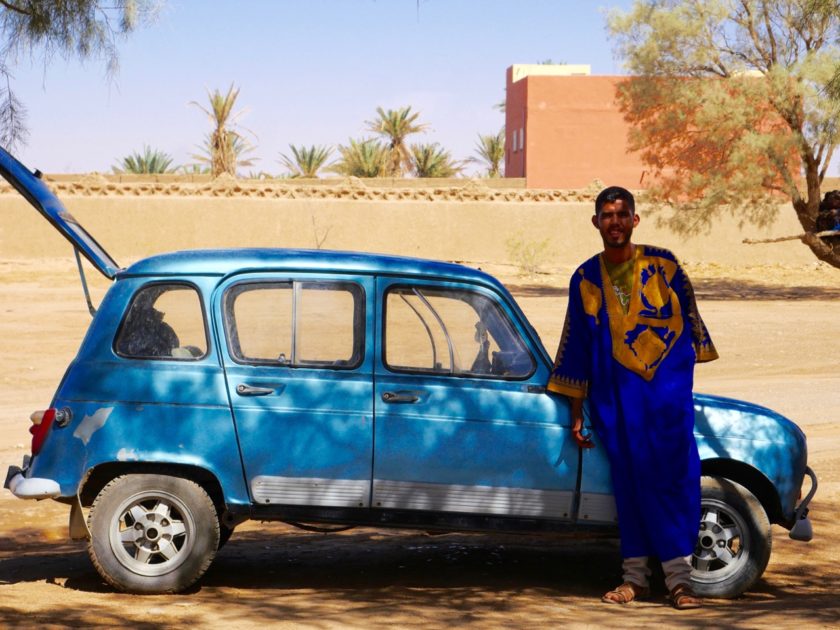
0 Comments